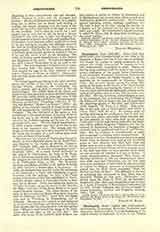

Christopher, POPE (903-904). Some hold that Christopher, once Cardinal–Priest of the Title of St. Damasus, a Roman and son of Leo, was an antipope. But though his manner of taking possession of the papacy was wholly uncanonical, he appears to have been subsequently recognized as pope. Hence we find his name included in all the more or less contemporary catalogues of the popes (Liber Pontificalis, II, ed. Duchesne; Watterich, Pontificum Romanorum Vitae, I; and Origins de l’eglise romaine, I, par les membres de la communaute de Solesmes, Paris, 1836). His portrait figures among the other likenesses of the popes in the church of St. Paul Outside the Walls, at Rome, and among the frescoes of tenth-century popes painted in the thirteenth century on the walls of the ancient church of San Pier-in-Grado, outside Pisa. He was, moreover, acknowledged as pope by his successors; for, in confirming the privileges of the Abbey of Corbie in France, St. Leo IX mentioned the preceding grants of Benedict and Christopher (Jaffe, Regesta RR. Pont., I, n. 4212). This privilege is the only one of Christopher’s acts which is extant (ibid., 3532, 2d ed.). He became pope by forcibly dethroning his predecessor, Leo V, and putting him into prison, seemingly about October, 903. As Leo appears to have soon died in his prison, Christopher may be regarded as pope after his death. One writer, indeed, Eugenius Vulgarius, who was interested in blackening the character of Sergius III, pretends that he murdered both Leo V and Christopher. But his evidence is unsatisfactory in itself, and is opposed to evidence better substantiated. At this period, however, the darkest ever known in papal Rome, when its barons were making and unmaking popes at their pleasure, and when both Italy and Rome were in such a state of turmoil that men could find no leisure to write history, we have to grope about in the dark and when we have grasped some detail we can scarcely tell whether it is fact or fiction. A Greek eleventh-century document (Mon. Graeca ad Photium pertinent., p. 160, ed. Hergenrother, Ratisbon, 1869) says that Christopher was the first pope who, in his profession of faith which he sent according to custom to Sergius, Patriarch of Constantinople, stated that the Holy Ghost proceeded “from the Father and from the Son”. The difficulty in the way of accepting this statement is that there was no Patriarch Sergius at this time. Christopher was driven from the Chair of Peter by his successor, Sergius III (January, 904), and compelled to end his days as a monk (Chronicle of Hermannus Contractus, ad an. 904), though Vulgarius says he was strangled in prison [Dummler, Auxilius and Vulgarius (Leipzig, 1866), 160, 135].
HORACE K. MANN

